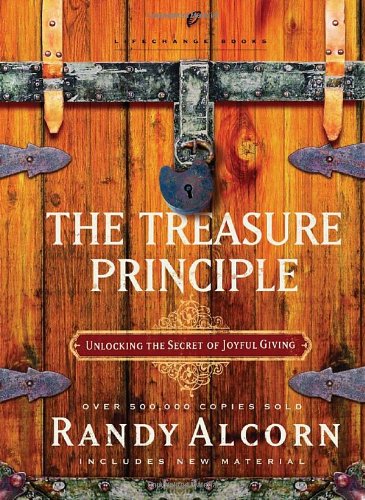Even if we agree that financial stewardship is important and integral to our walk with the Lord, it can still be hard to apply that philosophy in our daily lives. This is where discipline and practice come in. Obedience to God in this area requires an intentionality that sometimes begins simply with education. Start surrendering this aspect of your life to God by learning more about budgeting, debt, and investing. Take notes, and consider ways you can begin incorporating what you discover.
Budgeting
Read the following article by Dave Ramsey for one take on how to create a helpful budget (Source).
“How to Make a Zero-Based Budget”
In the movies, when someone goes looking for buried treasure, they’ll carry a map. The map tells them where to go, what to look for, and what to avoid on the way there. And once they reach their destination, they’ll find the good stuff—the gold, silver and jewels.
That’s the zero-based budget in a nutshell. It will keep you on the path to riches, but you must follow it if you are going to find what you are looking for and avoid the pitfalls.
What is a zero-based budget?
The concept of a zero-based budget is simple: income minus outgo equals zero. If you earn $3,000 a month, you want every item that you spend/save/give/invest to all equal $3,000. That way, you know where every one of your dollars is going. Not knowing where the money’s going is what kills a lot of people’s money situations. They just look up one day and they have no money—and no clue about where it went.
So here’s how you do it.
1. List all your income sources for the month. You can do this the old-fashioned way, with a sheet of paper, or you can use EveryDollar—the best free budgeting tool available. Your income should include paychecks, small-business income, side jobs, residual income, child support and so on. If it’s money that comes into your household’s bank account, write it down and add it up.
2. List (or input into EveryDollar) every single expense you have each month. Rent, food, cable, phones and everything in between gets added to the list. Your expenses vary from one month to the next, which is why you make a new spending plan each month. A gift budget might be high in December and low in April. The car budget might spike in the months when you have to renew the tags and pay insurance. Focus on one month at a time.
3. Subtract your income from your expenses. Ideally, this number should be zero, but it might take some practice. Don’t be shocked or worried if they don’t balance each other out. That just means you’ll need to do something to bring one of the numbers up, the other down, or both. But whichever you do, don’t spend anything that’s not accounted for. If you budget $100 for eating out and you’re already at $95, look on the dollar menu of a fast-food joint for your lunch. Don’t break your plan!
If you spend more than you make, then you need to make some cuts in order to make your income and outgo equal. To reduce expenses, try clipping coupons, cutting back on groceries, or catching a carpool to work. If you want to generate more money, get a second job or sell something.
Here’s the deal with a zero-based budget: Every Dollar must have a name! That means you must have zero dollars left over. If you fill out every item in your budget and come out $100 ahead (meaning you have nothing for that $100 to do), you haven’t finished your budget. You must assign that remaining $100 to something. Whatever you decide is up to you. But if you give it no name, it will be spent carelessly and you’ll end up scratching your head over that missing $100 you thought you had.
The final thing to remember is that, at first, you’re the boss of the budget. Once it’s made, though, the budget is your boss. But don’t think of it as confining. It actually gives you freedom.
And as a guide, your budget will lead you to the treasure, so stick with it.
—–
Debt
For most people, debt is one of the scariest aspects of financial management. Watch the following video, in which Howard Dayton of Compass outlines God’s solution to debt.
Investing
Investing is a complicated exercise, and there are many different strategies and philosophies for how to be a successful investor. In the following article, Compass describes a biblical method for investing that they call “steady plodding” (Source).
“Investing”
The Bible provides us with four primary guidelines for investing.
1. Be a steady plodder
The fundamental principle for becoming a successful investor is to spend less than you earn and regularly invest the surplus. In other words, be a steady plodder. The Bible says, “Steady plodding brings prosperity, hasty speculation brings poverty” (Proverbs 21:5, TLB). Nothing replaces consistent, month-after-month investing.
2. Avoid risky investments
God warns us to avoid risky investments, yet each year thousands of people lose money in highly speculative investments and scams. The Bible says, “There is another serious problem I have seen everywhere—savings are put into risky investments that turn sour, and soon there is nothing left to pass on to one’s son. The man who speculates is soon back to where he began—with nothing” (Ecclesiastes 5:13-15, TLB).
How many times have you heard of people losing their life’s savings on a get-rich-quick scheme? Sadly, it seems that Christians are particularly vulnerable because they trust others who appear to live by their same values. The strategy for avoiding risky investments is to pray, seek wise counsel from your spouse and others, and do your homework.
3. Diversify
Money can be lost on any investment. Stocks, bonds, real estate, gold—you name it—can perform well or poorly. Each investment has its own advantages and disadvantages. Since the perfect investment doesn’t exist, we need to diversify and not put all our eggs in one basket. “Divide your portion to seven, or even to eight, for you do not know what misfortune may occur on the earth” (Ecclesiastes 11:2).
4. Count the cost
Every investment has costs: financial, time, effort, and sometimes even emotional stress. For example, a rental house will require time and effort to rent and maintain. If the tenant is irresponsible, you may have to try to collect rent from someone who doesn’t want to pay—talk about emotions! Before you decide on any investment, consider all the costs.
Apply the Principles: When and Where to Invest
Now, let’s apply those four investing principles.
When deciding where to invest, you need to consider your goals, timeframe and tolerance to risk. The concept of risk is important because, as the “Time & Risk” diagram shows, investments with the best track record also carry the greatest potential for loss—at least in the short run.
In other words, the more time you have, the more you can afford to invest in stocks, mutual funds or real estate—all investments that can lose value in the short term but historically offer the best opportunity over the long term. If you have ten or twenty years before you need the money, you can probably recover from most market downturns, but if you need it in less than five, alter your approach.
This means using different investments for different goals. An investment that is suitable for a fifteen-year goal is simply not appropriate for money you will need in two years. If you need the down payment to buy your home in two years as opposed to funding your retirement in fifteen years, you will invest the money differently. Move your money into more conservative investments as you get closer to the time you will need to spend it.
With that in mind, here are strategies to consider over the short (less than five years) and long (more than five years) term.
Less than five years. When you need the money in less than five years, invest in what are known as cash equivalents: money market funds, certificates of deposit (CDs), and Treasury notes.
Longer than five years. The most common investments of longer than five years are mutual funds, stocks, bonds, and real estate.
Mutual funds. The biggest advantage of investing in mutual funds is that you can apply the biblical principles of diversification and professional investment advice. There are many kinds of mutual funds. Some are composed of stocks, some of bonds; some contain both. Others mutual funds consist of international stocks or are limited in their selection to a investment, such as real estate. There are also many types of bond funds—those invested in government bonds, corporate bonds or tax-free municipal bonds. A balanced mutual fund invests in cash-equivalents, stocks and bonds. Choose funds that have solid track records for a minimum of ten years.
Stocks. When you buy a stock, you are purchasing part of a company. Generally, stocks have one of the greatest opportunities for profit, but you also can lose a lot if the company does not perform well. Some stocks pay a dividend.
- When you buy a bond, you loan money to a business or the government, and they pay you interest. Investors buy government bonds for safety, municipal bonds for tax-free returns, and corporate bonds for higher yields. It is important to realize that when interest rates rise, the value of bonds decline, and vice versa.
Real estate. People buy property for income or appreciation. There are tax advantages for owning buildings because depreciation is deductible. However, unlike publicly traded stocks or bonds that can be sold quickly, real estate may require a long time to sell.
Remember, the name of the game is to be a steady plodder—consistently add to your investments and allow them to compound.












